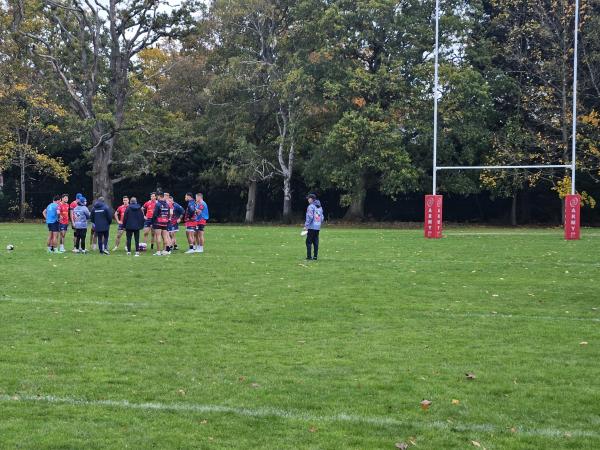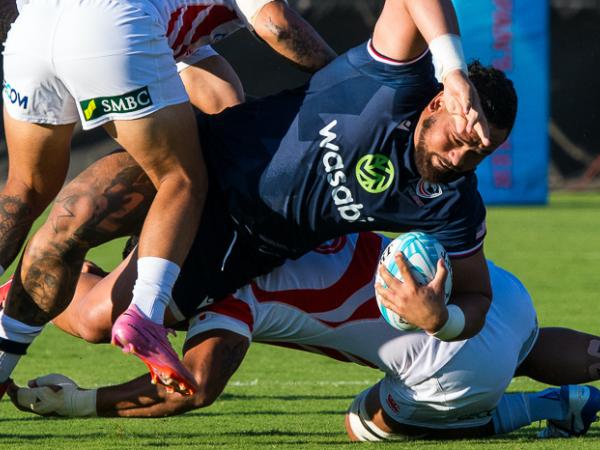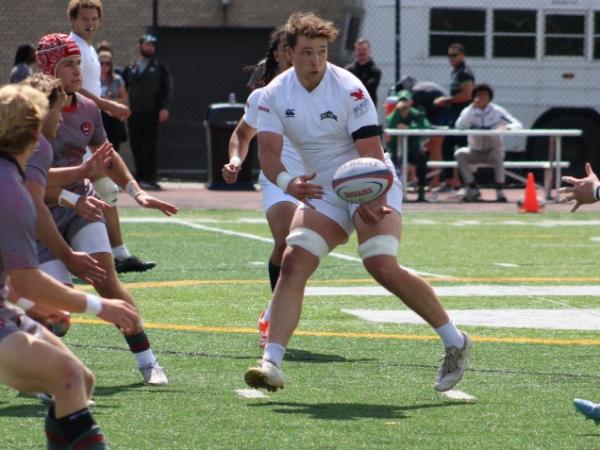The USA won the Glendale 7s playing some of the best seven-a-side rugby the Eagle woman have shown in a long time.
We know they're better now than they were a year ago, heck, six months ago. But how? Here are four aspects of play where the Eagles are way, way better than they were.
Passing
There are two types of passes that for a while the USA wasn’t particular good at—short little pop passes, and very long passes leading the runner.
In Glendale, we saw a lot more of both.
Using hard runners like Jordan Gray-Matyas, Abby Gistaitis, and Ilona Maher to engage defenders, the Eagles then sent players in support to get than short offload.
It seems obvious, but for years the USA didn’t really play this way (see above).
But a short little pass does wonders for sowing doubt in a defender’s mind, and also just redirects defensive attention.
The long passes are more obvious. You want to play with width, you have to be able to pass long distances. The Eagles were doing this, but they had to stop and heave the ball to accomplish the task. That took more time, the receivers had moved ahead a step or two by that time, and the passes were a bit behind, forcing the receivers to slow down.
In Glendale, the Eagles were passing effectively, leading the receive, and forcing the receive to accelerate to make the catch. Faster players, faster game both laterally and vertically, and more tries.
Use of Power Runners
In the past the Eagles would send the power runner straight ahead, set a ruck, and do it again. That can be effective if your power runners are very powerful and can break through, but that’s rarely the case on the World Series circuit.
So we’re seeing the stronger runners now take a slightly ankled line to open up gaps for support; or, the players are just being more powerful at the point of contact, but also focusing on presenting ball quickly so the rest of the team can exploit the half-break.
Determination
For some time it seemed that the only regular sevens Eagle interested in breaking out of tackles was Alev Kelter. But she has been joined by a few veterans, plus relative newcomer Kristi Kirshe, as the team has embraced a different mindset about being tackled.
(I’d add a Kelsi Stockert comment here but she’s not with the team anymore. Maybe she wasn’t just a sevens specialist, whatever, Stockert broke tackles, which seems kind of important.)
Namely, players are yanking their legs out of ankle grabs (Kirshe is excellent at this), working the power step (Ilona Maher, Lauren Doyle), and when grabbed around the torso, wriggling out of trouble and still going (Kirshe, Kelter, others).
That can create breaks that lead to tries, or can simply delay the actual tackle until help arrives—it’s the latter that worked nicely in the final in Glendale against Australia.
Tackling
The old, frustrating USA team put in light players who grabbed around the knees and expected their weight to bring down opponents. That worked against Brazil, but less so against New Zealand. Now this USA team is more powerful, stronger, and directs the contact more.
They slam down opponents. They duck under those fends and make the ballcarrier feel it.
It’s a huge difference, not just in tackle efficiency, but in how unhappy it makes the opposition feel. New Zealand’s only answer was to hope the referee took pity on them.
Bringing It All Together
It’s not perfect. The USA almost lost to Canada and lost to France. The French game, especially, was because they fell into some bad habits in making tackles.
But what won it all on Sunday was a pattern that exploits space, better passing decisions and execution, and fitness and strength that gave players the confidence to crush it on defense, and not capitulate on the first hit.



























































